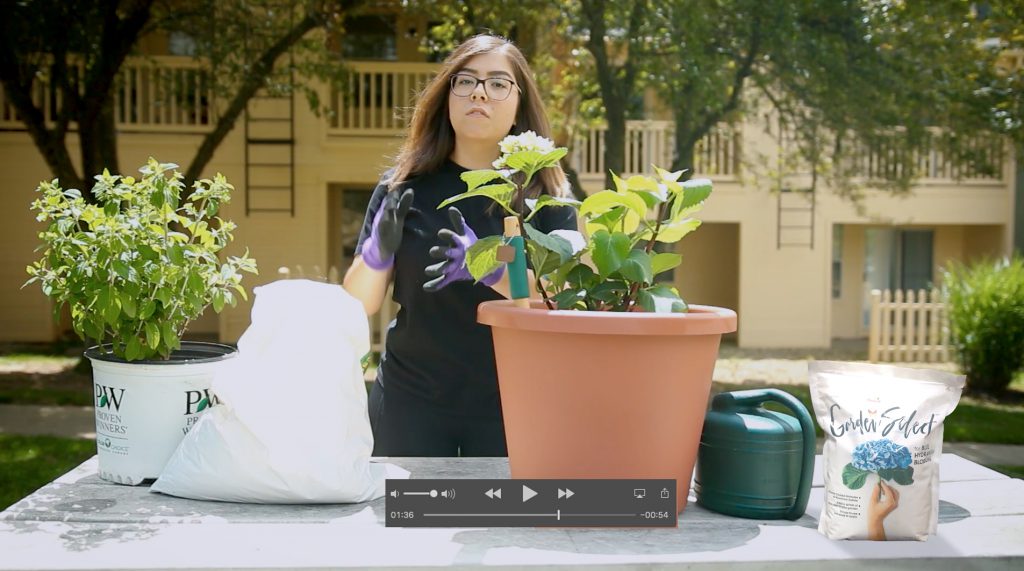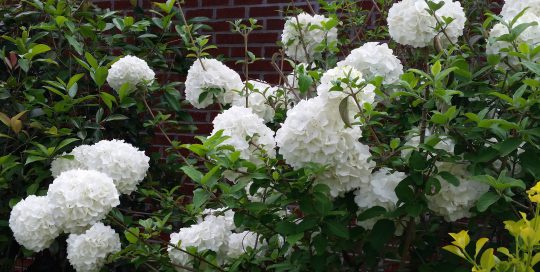Hydrangea aborescens
I discovered Hydrangea aborescens the same way many a frustrated gardener has- I loved the mopheads of H. macrophylla, but just didn’t have enough sun in my yard to sustain them. Though try (and try, and try again), I did. Enter H. aborescens, commonly known as smooth hydrangea. By far my favorite of all the species for its easy care, beauty, and reliability.
Like H. macrophylla, these hydrangeas have huge, ball-shaped flower heads, at times reaching 12 inches in diameter! In fact, these flowers can grow so large they may need to be staked or propped up with a small wire fence to prevent them from drooping. The creamy white flowers are stunning against darker green foliage. When used in a hedge or mass planting, the effect can be striking.
Plants bloom on new growth each year, so they can be pruned back if desired. Cold winter temperatures won’t phase them. H. aborescens is one of the only hydrangeas native to the United States and they are hardy to zone 3! Reaching a height and width of 3-6 feet, this low maintenance plant performs best in part shade, and blooms from early summer right into fall. Smooth hydrangeas are profuse bloomers, and snowball shaped flowers are excellent for cutting.
Hydrangea paniculata
Another reliable cold weather bloomer is Hydrangea paniculata, hardy to zone 3, and named for its tapered flowers, which form cone-shaped panicles. Unlike most other hydrangeas, H. paniculata actually performs best in full sun. It can reach a height and width of 6-8 feet! With gently arching branches that give the shrub an overall vase shape, it is striking in the background of a perennial border, or as a focal point in the garden.
Blooms are large and pyramidal. They first appear white or pale green in midsummer, but turn a muted, rosy pink closer to fall. Blooming takes place on the current season’s growth. Panicle hydrangeas can be pruned in late winter or early spring. They are the only hydrangeas that can be shaped into tree form, which makes them an excellent and attractive choice for specimen plantings.
Hydrangea quercifolia
Commonly known as oakleaf hydrangeas, due to their leaves’ resemblance to those of an oak tree, Hydrangea quercifolia is, like H. aborescens, native to the United States. However, it is hardy only to zone 5. This means it is, unfortunately, not an ideal choice for much of the Midwest. Similar to H. paniculata, flowers form a spiky panicle and start off white, aging to a deep pink as the season progresses. In fall, the leaves claim center stage as they turn dramatic shades of red, yellow, and orange.
Oakleaf hydrangeas can be grown in much sunnier areas than the mophead varieties. Though, they will thrive in part shade as well. If pruning is necessary, it should be done immediately after plants finish blooming to avoid removing the buds of next year’s flowers.






